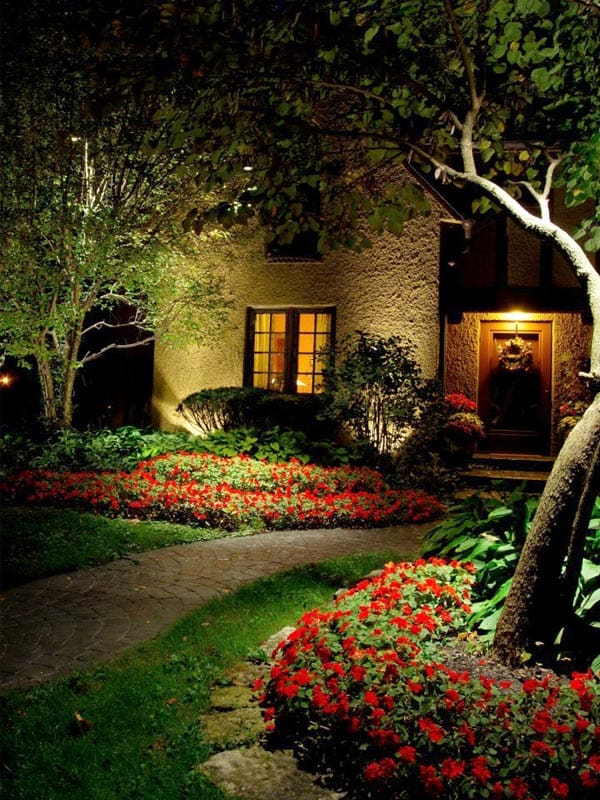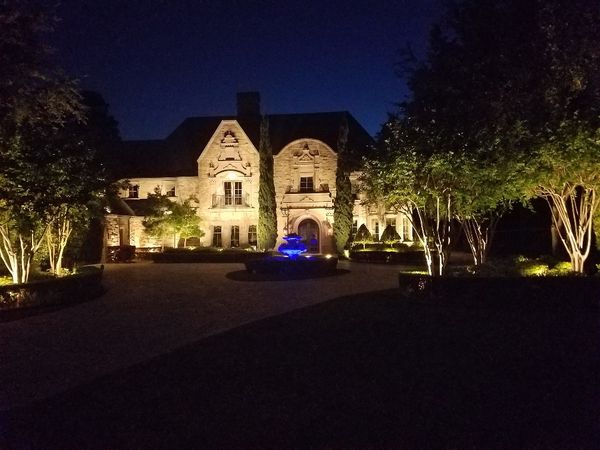
Outdoor lighting is nothing to take lightly. Quality illumination makes the difference between a house that is inviting and appealing at all hours and one that no one notices after 6 PM. Exterior lighting is also crucial for safety, preventing tripping, falling, and other accidents. The following tips will maximize your home’s curb appeal and value while minimizing risks, making you the envy of your neighbors:
Tree Lighting Techniques
Trees provide a valuable focal point, helping visitors gain their bearings while mounting lights high enough to illuminate large portions of the yard. You should thus take full advantage of all your trees, no matter their size. Start by placing two or three lights at the tree’s base facing upward, illuminating it from every angle. For taller trees, look for areas to install side bulbs near the top where there are few branches; this will project light over as much of the yard as possible.
Variable Vantage Points
Although trees will help to illuminate your yard, few houses have enough of them to do the job on their own. You should thus supplement them with standing lights, as well as path lights and lights mounted on smaller plants. The key to doing this effectively is to vary the height and scope of the lights in accordance with your yard’s characteristics.
Place tall, bright lights in the outer areas of your yard or other places that are hard to see. As you get closer to the door, arrange lights at chest and waist height, either freestanding or linked to bushes and smaller trees. Finish by placing path lights leading up to the door. This will complement the light from your house’s interior, guiding visitors and inviting them inside.
Porch Lighting Best Practices
Porches and patios provide a transition space between your house’s interior and the outside, inviting visitors in when they arrive and easing them back outside when they leave. Your lighting designs should thus highlight this area’s importance to the rest of the house. If there is an overhang, install powerful porch lights in it, placing one every five feet or so. For open porches and patios, place lights on every corner, on major architectural features, and anywhere else that has limited visibility. If you use torches or gas lamps, make sure to include electric lights nearby in case the former do not prove powerful enough.
Outdoor Lighting Tips
In addition to the position of your lights, make sure to consider:
- Type- In general, you should opt for LED lights, as these provide the most illumination while using minimal energy. They also last longer.
- Trigger- Instead of relying on a switch, you may want to program your lights to turn on and off at certain times, or to respond to a motion sensor.
- Fixtures- Make sure that your light fixtures hold the bulbs steady, protect against weather, and do not block the path of light.
For more information on illuminating your home’s exterior, contact Creative Nightscapes today.



